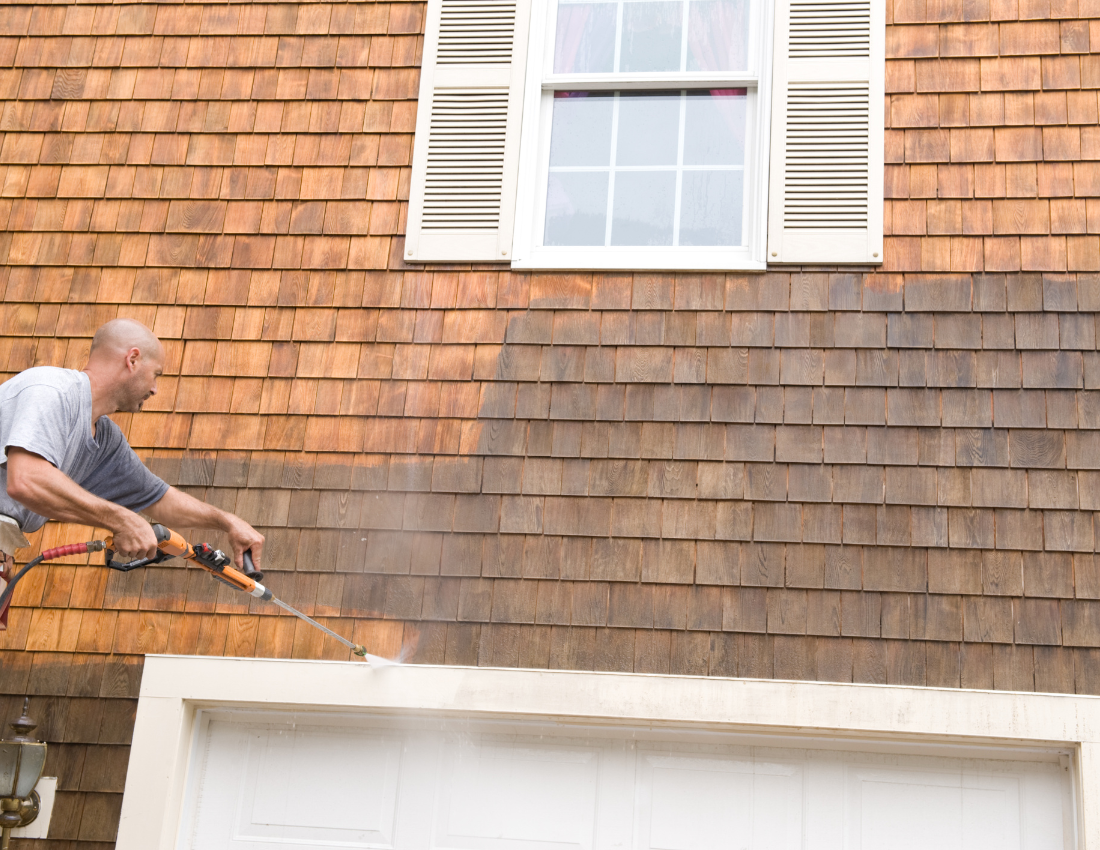Your home’s exterior is more than just the face you show to the world—it’s an essential shield protecting the structure beneath from weather, moisture, and wear. If you’re planning an exterior house painting project, knowing when to repaint can save you money and stress down the line.
Recognizing the signs to repaint your house exterior helps you stay ahead of damage and maintain your home’s curb appeal. Whether you live in an area with harsh winters, intense sun, or humid summers, your paint faces constant challenges.
Let’s walk through some common signs to repaint your house exterior.
Key Takeaways:
- Peeling or cracking paint is a clear sign your home needs repainting soon.
- Faded or discolored paint weakens your home’s curb appeal and protection.
- Mildew and stains that won’t wash off indicate a failing paint barrier.
- Cracked or missing caulk around windows and doors calls for repainting and resealing.
- Most exterior paint jobs last 5–10 years; timing your repaint helps avoid costly damage.

The Importance of Timing for Your Exterior Painting Project
Painting your home’s exterior at the right time is important. Waiting too long could mean dealing with costly repairs like wood rot, mildew, or structural damage. On the other hand, repainting too often wastes resources. Spotting the right signs to repaint your house exterior gives you a balance of protection and aesthetics.
When planning your project, consider factors like your home’s age, the quality of previous paint jobs, and local climate conditions. Painting in Marietta, GA means dealing with specific challenges such as:
- High humidity or heavy rainfall
- Intense sunlight that causes fading
- Seasonal temperature swings causing expansion and contraction of materials
Knowing these can help you interpret the visual clues on your home’s surface better.
Watch for These Common Signs to Repaint Your House Exterior
Here are the key signs to repaint your house exterior that signal it’s time to start planning your painting project:
1. Peeling, Cracking, or Bubbling Paint
One of the clearest signs to repaint your house exterior is paint that starts peeling away, cracking, or forming bubbles. This happens when moisture gets trapped beneath the paint surface or when the paint loses adhesion over time.
If left untreated, moisture can reach wood or siding, causing rot or mold growth. Early repainting prevents this damage and protects your home’s structure.
2. Noticeable Fading or Color Change
Paint naturally fades due to exposure to ultraviolet rays and weather. If your once vibrant paint now looks dull, chalky, or discolored, it’s time to consider repainting.
Darker colors tend to show fading faster, especially on sun-exposed walls or rooflines. Even if the paint is intact, faded color weakens your home’s aesthetic appeal.
3. Mildew, Mold, or Stains That Don’t Wash Off
Persistent stains, mold, or mildew on siding or trim often indicate the current paint isn’t providing a strong enough moisture barrier. Washing might remove some surface dirt, but stubborn stains or black spots that keep returning show your paint has lost protective qualities.
Applying a fresh coat with mold-resistant paint can help prevent these issues from recurring.
4. Chalky or Powdery Residue on Surfaces
If you run your hand over the painted surface and notice a powdery substance, this chalking signals the paint film is breaking down. Older oil-based paints are more prone to this.
Chalking not only looks bad but also reduces paint’s ability to protect against water and dirt buildup.
5. Shrinking, Cracked, or Missing Caulk
Paint isn’t the only line of defense—caulking around windows, doors, and trim seals gaps where water and air can enter. If you spot cracking, pulling away, or missing caulk, repainting becomes necessary.
A proper exterior paint project will include re-caulking, sealing these vulnerable spots to improve longevity and energy efficiency.
6. Damaged or Warped Wood or Siding
While paint covers and protects your siding, damage to the wood itself can sometimes show through. Warped boards, soft spots, or splits are clear warning signs. Painting over damaged wood won’t fix the underlying problem, but repainting is necessary once repairs are made.
7. Outdated or Unappealing Color Scheme
Sometimes, the decision to repaint is more about style than damage. If your home’s color feels dated or doesn’t fit your neighborhood’s vibe anymore, repainting offers a quick way to update your home’s look.
Modern colors can enhance curb appeal and even increase resale value. It’s a chance to refresh your home’s personality.
8. It’s Been More Than 5-10 Years Since Your Last Paint Job
Even with well-applied, high-quality paint, most exterior finishes last between five and ten years depending on materials and climate. If it’s been longer than this, the risk of wear and damage increases. Repainting before serious issues arise can protect your investment.
Tips for Planning Your Exterior Painting Project in Marietta, GA
When you notice any of these signs to repaint your house exterior, here are a few things to keep in mind for a smooth project:
- Inspect thoroughly: Walk around your home after rain or in daylight and look for any suspicious spots.
- Choose durable paint: Consider paints made for your climate—resistant to mildew, UV rays, or moisture.
- Prep properly: Pressure washing, scraping loose paint, sanding, and repairing siding are essential before painting.
- Mind the season: In Marietta and sorrounding areas, spring and early autumn usually provide the best weather—dry and moderate temperatures for painting.
- Consult professionals: Experienced painters can spot subtle issues you might miss and offer advice on color, finish, and materials.
How Fresh Paint Protects Your Home
Your home’s paint acts as a barrier against many threats:
- Water damage: Properly painted surfaces repel rain and moisture.
- UV damage: High-quality paint resists fading and deterioration from sunlight.
- Pest defense: Paint seals cracks where insects and pests might enter.
- Structural integrity: Keeps wood and siding safe from rot and decay.
Ignoring the signs to repaint your house exterior risks these protections wearing thin, potentially leading to costly repairs.
Ready to Refresh Your Home’s Look?
Watching for these signs to repaint your house exterior helps you maintain your home’s value and beauty. Don’t wait for peeling paint or mildew to cause bigger issues—taking action now keeps your home protected.
If you’re planning an exterior house painting project, give us a call at 678-922-4970 for a FREE estimate. Our team offers expert advice and professional service to make your home look its best and stand up to the elements for years to come.
Frequently Asked Questions About Repainting Your House Exterior
How often should I repaint my house exterior?
Most homes require repainting every 5 to 10 years, but this varies based on factors like the quality of the previous paint, the type of siding material, and the local climate. Harsh weather conditions—such as intense sun, heavy rain, or humidity—can shorten the lifespan of exterior paint. Regular inspections help spot early signs of wear, allowing you to plan repainting before damage worsens.
What weather is best for exterior painting in Marietta, GA?
The ideal weather for exterior painting includes dry days with temperatures between 50°F and 85°F. High humidity can prevent paint from drying evenly, so choosing days with low moisture levels is important. Avoid painting right before rain or during extreme heat, as these conditions can cause paint to blister, peel, or cure improperly. Spring and early fall often provide the most consistent weather for a successful paint job.
Can I paint over peeling paint?
Painting directly over peeling paint is not recommended. Peeling indicates that the existing paint has lost adhesion, and applying new paint on top will result in a poor finish that will likely fail quickly. To prepare properly, all loose and peeling paint must be scraped off and sanded smooth. This ensures the new paint can bond well to the surface and last longer, protecting your home effectively.




